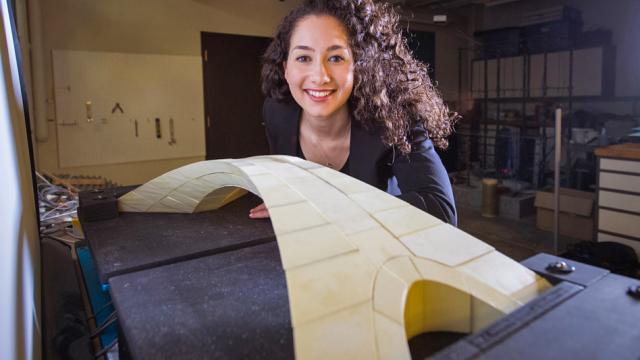Some 500 years after his death, researchers are still discovering just how talented and brilliant Leonardo da Vinci was. Architects and civil engineers at the Massachusetts Institute of Technology used a 3D printer to create a replica of a bridge da Vinci designed, but never built. To their surprise, not only did it work, but it would have also revolutionised bridge design five centuries ago.
As the story goes, in 1502 A.D. the Sultan Bayezid II wanted to build a bridge to connect the city of Istanbul to its neighbour, Galata. One of the proposed designs came from Leonardo da Vinci, who had already made a name for himself in the arts and sciences at the time. In a letter he sent to the sultan, accompanied by a notebook full of sketches, da Vinci described a bridge that would span the proposed distance using a single, flattened arch design, supported by bases on either shore.
Bridges at the time were typically made using a series of semicircular arches, and to span the distance between the two cities would have required at least 10 evenly spaced piers in between to support the entire structure. Da Vinci’s design, which would have easily allowed sailboats to pass beneath it, was radically different (and centuries ahead of its time), which is probably why the sultan decided not to take the risk. Half a millennium later, researchers were curious if it would have succeeded.
The original notes and illustrations describing the bridge didn’t specify what materials would be used to build it, or how it would actually be constructed. But the MIT researchers concluded that the only material that would have provided adequate strength was stone, and based on the building techniques commonly employed around the same time da Vinci came up with this design, the bridge would have probably been engineered to rely on gravity to hold all of its pieces together.
To test their assumptions, the team at MIT created a 1:500-scale replica, measuring about 80cm long, that would be assembled from 126 blocks of varying shapes and sizes, created by a 3D printer. The real bridge, had it actually been built, would have required thousands of precisely chiselled stone blocks for its assembly, but the approach MIT took for the replica still allowed them to properly test the feasibility of its design.
Not only did the bridge work, remaining strong and stable without the use of any mortars or fasteners, but the team at MIT also realised that da Vinci had even engineered a way to minimise unwanted lateral movements in the structure, which would have quickly led to its collapse.
The footings on either side of the arched bridge featured designs that splayed outwards to add a considerable amount of stability. The bridge would have even survived most earthquakes, which were common at the time in that area, as the MIT researchers discovered by putting their replica on two movable platforms. It wasn’t indestructible, but it would have been an ancient architectural marvel.
